As an Amazon Associate I earn from qualifying purchases. Please read the disclaimer for more info.
One of the most significant daily decisions when visiting the land of the rising sun is choosing what to eat in Japan.
With Japanese cuisine now much more familiar and appreciated worldwide, looking for what food to eat in Japan has become an easier task.
For me, the total food experience in Japan is elevated beyond the sum of the individual parts.
How else could eating a piece of onion covered in breadcrumbs and deep-fried become a gastronomical highlight? When does eating a single grape become one of the strongest memories of a trip?
Because this is Japan, and food is taken as seriously here as anywhere else on earth.
And, most importantly, it is just simply delicious!
Here are 20 of the best Japanese food experiences to try.
Related: What is Pan Asian Food?
Table of Contents
- Hiroshima Okonomiyaki
- Conveyor Belt Sushi (Kaiten Sushi)
- Yakitori in Shinjuku
- Freshwater Eel (Unagi) in Kyoto
- Grilling Your Meat at a Yakiniku Restaurant
- Japanese Street Food Snacks at Tsukiji Fish Market
- Sardines stewed with umeboshi in a Shokudo.
- Depachika – a Mecca for What to Eat in Japan
- Japanese Sake
- Sashimi – a Standard What to Eat in Japan Dish
- Japanese Curry
- Ramen – a Classic Food to Eat in Japan
- Eating Soba and Udon at a Simple Noodle Bar.
- Takoyaki in Osaka
- Kushikatsu in Osaka – What to Eat in Japan sorted!
- Eating Barbecued Seafood on Dotonbori, Osaka
- Tonkatsu Donburi (Katsudon)
- Tensoba (Tempura and Soba noodles)
- Sweet What to Eat in Japan – Fruit and Other Sweet Treats
- Dried Seafood
- What to Eat in Japan – Conclusion
Hiroshima Okonomiyaki
If I learned one thing about okonomiyaki, it is that to eat a good one; you need to line up.
In both Osaka and Hiroshima, orderly queues are formed outside popular okonomiyaki restaurants, with the dishes served often justifying the wait.
Okonomiyaki, in its simplest form, is a pancake or a crepe filled with various ingredients, but most notably large amounts of cabbage. It is cooked on a large hot plate by skilled okonomiyaki chefs and is a revered dish in both Hiroshima and Osaka.
However, the method of making okonomiyaki differs between the two cities. And, of course, there is a healthy rivalry over which one is better.
In Osaka, the ingredients are mixed before being grilled on the hotplate, and in Hiroshima, the components tend to be layered, are more likely to include noodles, and are finished with a thin layer of egg.
And yes, it is more complicated than that. And no, I couldn’t taste the difference other than the noodles.
What did strike me, though, was that okonomiyaki not only holds an important place within the food landscape of Hiroshima, it has a vital position within the modern post-world war two period in the city.
Visiting Hiroshima is about two experiences. Visiting the atomic bomb memorial facilities and eating okonomiyaki. Don’t miss either.
Related: Food Travel: My Top 10 Tips for Planning a Food Trip
Conveyor Belt Sushi (Kaiten Sushi)
Also known as “rotation sushi,” “Kaiten Sushi,” and “Kaiten Zushi,” and in some parts “sushi train,” this popular style of restaurant in Japan is, to me, almost the perfect way to eat these tasty bite-size pieces of seafood and rice.
There’s also something fun about watching small plates of freshly made sushi sitting on a conveyor belt and winding their way around the restaurant. It’s even more fun when something tasty catches your eye, and you can pluck it off the belt and sit it in front of you, ready to eat.
And at the end of the meal, the cost is determined by adding up the number of used plates.
A fun, tasty, and super easy way to enjoy sushi.
Yakitori in Shinjuku
Yakitori is a type of skewered chicken, where the meat is placed on a Kushi before being grilled over a charcoal fire. The cooked chicken is seasoned with a tare sauce or sprinkled with salt.
Our classic plate included skewers of the chicken thigh, wing, and skin and parts of the chicken served with mushrooms and leek. I didn’t enjoy the skin, but the other cuts tasted great.
We enjoyed our plate of Yakitori sitting outside an izakaya, in a small but busy back laneway of Shinjuku, along with a cold Asahi beer or two.
Freshwater Eel (Unagi) in Kyoto
I had read that this restaurant to try the dish without the hip pocket getting a big workout despite freshwater eel being expensive in Japan was a great place. And it was true, with prices being relatively low.
And what’s more, this small restaurant had a lovely little garden with a water feature just outside the window where we were sitting, which also added to the atmosphere.
We ordered one plate of grilled unagi between us, with a few side dishes to ensure we didn’t go hungry. We had an egg cup (too pretty not to include a photo (below), an exciting and tasty unagi omelet, miso soup, and a bowl of rice.
The eel is cooked over charcoal in a small kitchen overlooking the street.
The eel was rich in flavor but not fishy. It was firm enough to chew but fell apart. It was so soft.
If you are visiting Kyoto and looking for an unagi meal, I recommend heading to Kane Yo Restaurant.
Grilling Your Meat at a Yakiniku Restaurant
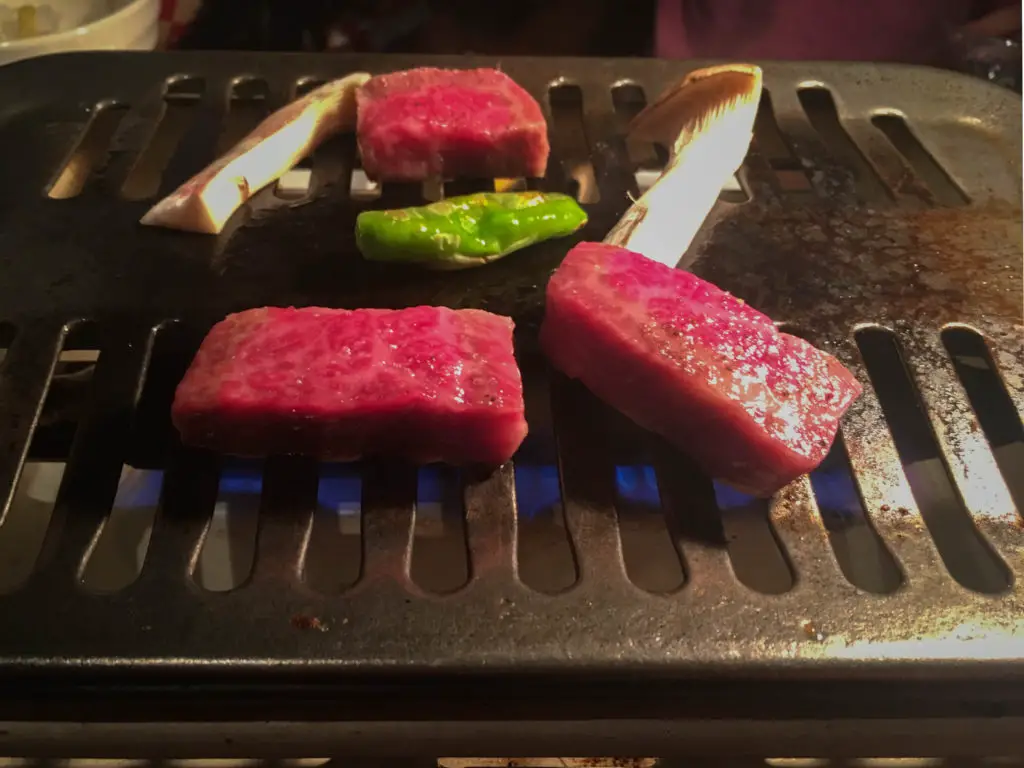
If there is one dish I constantly crave when traveling, it is beef. And I don’t mean in a stir fry, or a curry or a stew, but as a juicy steak, where I can chew and savor the flavor of the meat itself.
So, I was hoping that one of my favorite Japanese food experiences would be when I sat down at a Yakiniku restaurant. At these restaurants, not too dissimilar to Korean Barbecue, you get to cook your meat on a small yakiniku grill, which sits in the middle of the table.
We ordered a mix of 3 different cuts of wagyu (Japanese beef), and as the barbecue was heating up, they were delivered to the table and presented to us in the small ornate cabinet. They were taking this meat thing seriously.
As there were three of us at the table, they had portioned the individual cuts into three pieces, allowing each of us to have our meat cooked as we liked.
At this point, I need to point out that there was no English spoken at the restaurant, meaning I couldn’t ask any questions about the cut of beef (I figured sirloin, tenderloin, and something of a deeper flavor, like skirt), nor about the marble score (I just thought around the 6 to 8 mark).
But if there was one question I didn’t need to have answered, it was about cooking the beef. I waited until the barbecue was super hot, rubbed the surface with a piece of fat they had provided, then quickly grilled the meat until cooked perfectly (for me, that is, which is rare to medium rare, depending on the cut).
The beef was amazingly tender, the tenderloin and sirloin melted in my mouth, and the more flavourful cut had a rich beefy flavor. We thoroughly enjoyed our beef experience….thankfully.
Japanese Street Food Snacks at Tsukiji Fish Market
One unmissable Japanese food experience is heading to the massive Tsukiji Fish Market and sampling as many street food snacks as your wallet or stomach can handle. Tsukiji Market is one of the great seafood markets I’ve been to.
We found this a great way to sample some of the great Japanese dishes in one place. Snacks like sweet omelets, grilled freshwater eel, large freshly shucked oysters, high-grade fatty tuna, and an array of sweet treats, including some costly fruit.
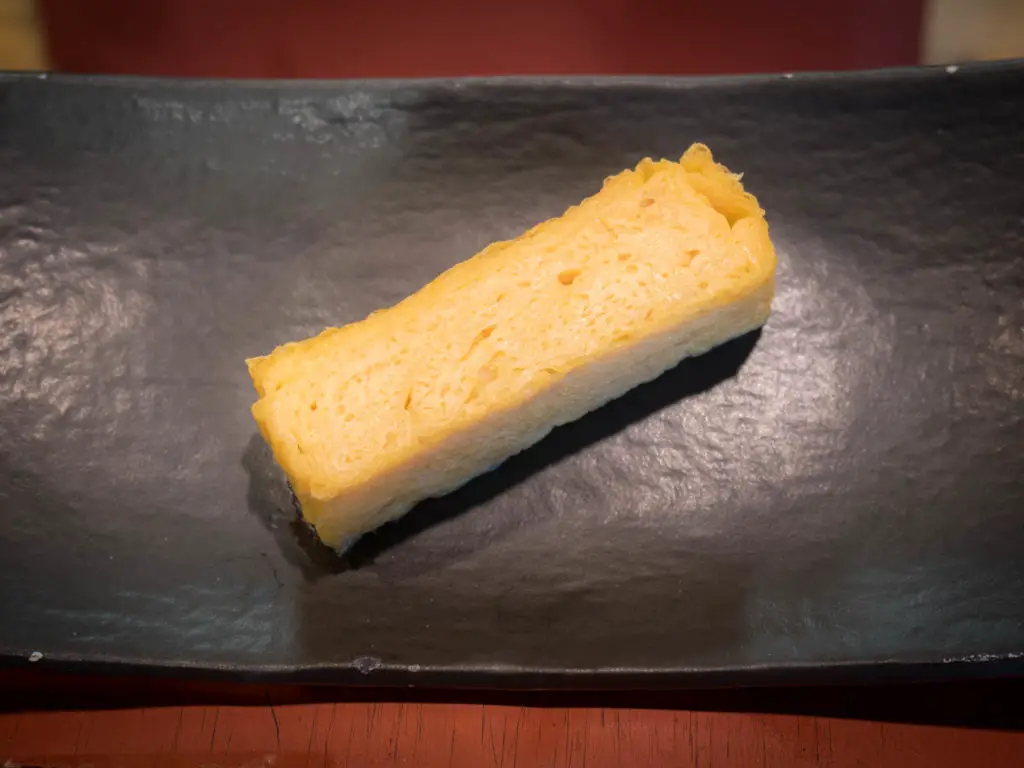
Sardines stewed with umeboshi in a Shokudo.
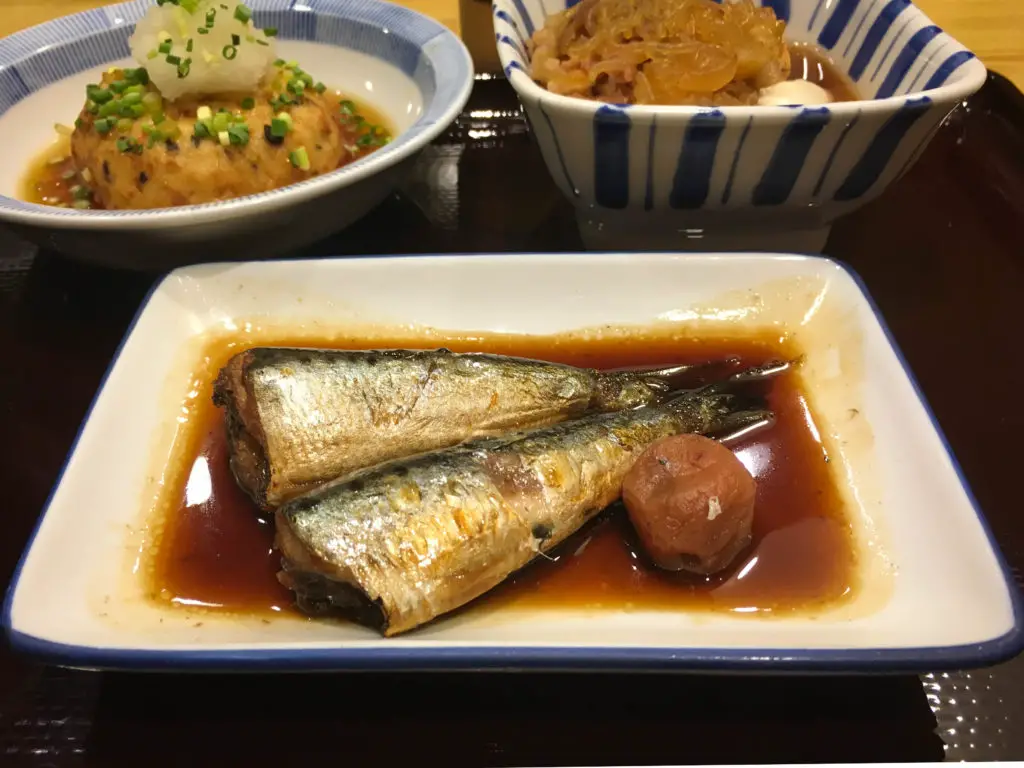
Shokudo is small casual eateries that serve a variety of inexpensive dishes in a cafeteria-type setting.
The ordering process is quite simple. Slide a tray in front of the display counter, adding a few small dishes as you go, and pay for them at the end of the counter. Find a table, fill your glass with the complimentary water, and enjoy.
The range of food was quite impressive, with high-quality ingredients being used and care taken in the presentation. All this, and some very affordable prices, meant that this was a place we visited multiple times.
Our favorite dish was a Japanese classic – Sardines stewed in umeboshi. Umeboshi is a tart fruit; the sardines are stewed in the fruit’s juice, then served with some cooking sauce—a tasty combination.
Depachika – a Mecca for What to Eat in Japan
I once read a description of a depachika that described it simply as a “wonderland of food.”
In Japan, a depachika is a food hall located in the basement area of a high-end department store.
And what a wonderland of food it is!
Each counter beautifully presents its specialties, whether expensive chocolates, fruits, vegetables, pre-made salads, bakery goods, bento boxes, or some impressive ready-to-eat meals.
And one of the great benefits of visiting a depachika is that there are tasting plates galore. We were able to roam from area to area, trying as many different goodies as we could.
However, on the other hand, one of the downsides of a depachika is that there is generally nowhere to eat the food you’ve bought unless you take it back to your hotel, home, etc.
With this in mind, we went to the Ginza Mitsukoshi store, as they have an outdoor area on the 9th floor, where tables and chairs are next to the large grassed area. A somewhat convivial setting for lunch.
For the record, we ate some cooked fish, a small bento box, a raw scallop, and melon salad with pomegranates (pictured below), with an apple strudel from the Johan Paris bakery for dessert.
Japanese Sake
While not strictly one of the Japanese food experiences, sake is included on this list because everyone comes across the drink at some point in their travels in Japan.
Luckily, it isn’t too alcoholic, and as it is served in small portions (see small bottle above), there is little danger of sake becoming too “intoxicating” without consuming quite a lot unless you drink it alongside beer and wine while catching up with a friend in Tokyo. Apparently.
A couple of pointers for drinking sake in Japan. If drinking with others, never fill your glass – wait for your drinking partner to do so, then fill their glass. Cold sake is considered the best, warm sake is regarded as the lesser quality, and the heat masks the flavor.
Kanpai!
Sashimi – a Standard What to Eat in Japan Dish
This is going to be a strange thing to write, but I had one difficulty with my Japanese food experiences, which related to sashimi.
You see, I love sashimi. I’ll happily over-order sashimi whenever I go to a Japanese restaurant anywhere in the world. It doesn’t matter what the raw piece of seafood is that you place before me; as long as it is fresh and high-quality, I’ll devour it.
So, why would this be a problem for me in Japan?
Because I had to remind myself more than once that I should be trying as many foods as possible and not just gravitating toward sashimi.
Mission accomplished, but it wasn’t easy.
Japanese Curry
Before coming to Japan, my knowledge of Japanese curry was that it was a simple comfort food dish that I had only eaten at the local “Asian” takeaway shop. Probably eaten after a long day at work, on a cold winter’s day – you get the picture.
So I was excited to eat at a curry restaurant in Japan to see how the curry differed if indeed it did.
We had just arrived back in Hiroshima after spending the day exploring Miyajima Island, so I was starving. At this particular restaurant, the process of ordering was to “build” the curry. That is, choose your sauce, the spiciness levels of the sauce (there were 12 levels to choose from), the amount of rice, and the toppings, such as a pork cutlet or deep-fried beef.
It was a satisfying meal—unpretentious and comfort food on a plate. The sauces had the same flavor profile as I had remembered, and with the addition of some deep-fried meat, eating the meal made life just that little bit better.
Ramen – a Classic Food to Eat in Japan
Ramen is one of those dishes that need to be eaten in Japan. It’s a hearty soup with many flavors, textures, and ingredients.
This is great until you join a queue to order from a vending machine and quickly get lost in the ordering process. That happened to us (well, me, actually).
I had missed a few steps, and once we were seated, the chef had to ask us some simple questions about our order. The only thing was he didn’t speak English, and I don’t speak Japanese. So he did some ramen noodle mime, and I pretended to understand and nodded when I thought I should.
Nonetheless, we ended up with a couple of tasty bowls of soup and a lesson to check that the order was complete before handing it over.
Eating Soba and Udon at a Simple Noodle Bar.
Whenever we needed a quick snack, especially after long train trips, we would look for a small noodle shop, which, luckily for us, we could always find in and around train stations.
These no-nonsense, sometimes standing-only noodle shops have a simple menu with a few choices of toppings with either soba or udon noodles.
While it is possible to visit a fancy noodle restaurant, these bars offer great-tasting noodles quickly and efficiently, all for a few dollars a bowl making for one of the quintessential Japanese food experiences.
Takoyaki in Osaka
Takoyaki is one of the more famous foods coming out of Osaka. There are Takoyaki shops seemingly on every corner selling these little wheat balls filled with octopus and covered with sauces and mayonnaise and chopped this or that, depending on your tastes.
For a city with such a food history, it was probably more of a surprise that a relatively simple dish, which is, how can I put this, a little bit of a mess, can be so crucial to the food landscape.
It’s undoubtedly a popular dish, and they taste good. However, they have no discernible flavor, and if I were spending longer in Osaka, maybe it would be a snack I would enjoy more on the way home from the local Izakaya after a few Kirins.
Kushikatsu in Osaka – What to Eat in Japan sorted!
They are also known as kushiage, this dish of meats and vegetables lightly covered in breadcrumbs, then deep fried.
I deliberately didn’t rank the Japanese food experiences in any order as that would be too difficult and ultimately pointless. But, if I had to mention a favorite “what to eat in Japan,” this might be.
The process of preparing, cooking, and serving this food seemed so simple. Add breadcrumbs, some meats, a few vegetables, deep fry, and line up on a plate.
But the taste was so overwhelmingly good. Each piece of meat, every single vegetable, was fresh and of the highest quality. And each was cooked superbly—every single one.
We had this meal at a small restaurant specializing in this cooking. There were only seven seats, and in a nod to the kind of establishment this was, there was a small wine fridge tucked away in the corner filled with French red wine.
For the record, we ate a combination of a quail egg, sausage, prawn, baby corn, okra, pumpkin, lotus root, eggplant, and onion.
We originally came in for a light meal but ordered as many seconds as possible in the initial mixed set.
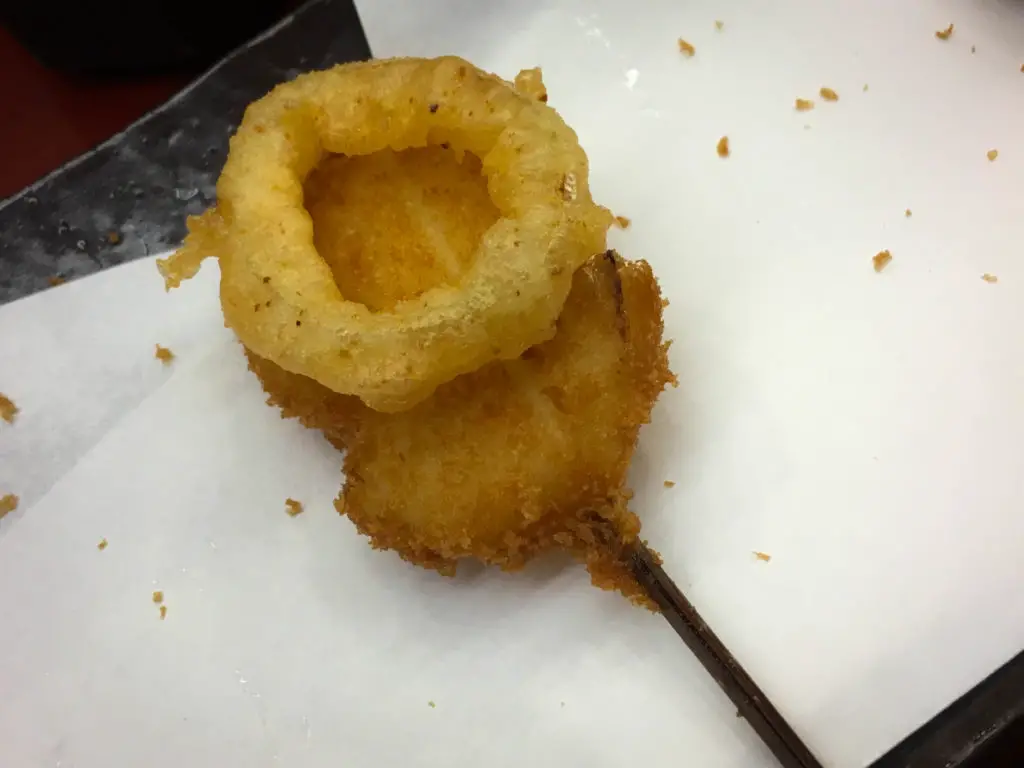
Eating Barbecued Seafood on Dotonbori, Osaka
With seafood so fresh in Japan and of such high quality, it is no surprise that many little stalls are set up on busy streets selling barbecued seafood.
Scallops, oysters, tuna, octopus, squid, and crab are a few of the tasty seafood morsels that can be enjoyed while walking along the bustling streets of Japan.
Probably the greatest concentration of barbecued seafood we found was along the brightly lit streets of Dotonbori, one of Osaka’s main attractions for tourists and locals alike. These seafood snacks can be enjoyed for a few dollars.
Tonkatsu Donburi (Katsudon)
Along with the local curry, Katsudon is another one of those Japanese food experiences that are pure comfort food. A crisp, deep-fried breaded pork cutlet, served over a steaming bowl of rice, sometimes with a rich and hearty sauce.
Now, I need to be honest here, when I was deciding on what to eat in Japan, I didn’t plan to eat katsudon, partly because I’ve probably eaten my fair share over the years and partly because I had so many other foods to eat in Japan that I needed to try.
But after a long day of sightseeing and my mind not knowing what I wanted to eat, I saw a picture of this breaded cutlet of goodness on a board outside of a restaurant and headed straight inside like a child going into a candy store.
And I didn’t regret a moment.
Tensoba (Tempura and Soba noodles)
Tensoba, or Tempura Soba, is a dish of – you guessed it – tempura served with soba noodles. And I have great affection for both. One of life’s little pleasures is a plate of freshly made, crispy, and light tempura. And there is nothing more deliciously simple than a bowl of mellow soba noodles served in a dashi broth.
But for the life of me, and I tried, I’ve been unable to develop a taste for both together. The crispy batter becomes soggy, and the clean dashi broth ends up having tempura “floaties.”
I’m sure there is a reason why this combination is so popular, and if you sit in the camp of loving this combination, I’d love to know why. Please leave a comment below.
Sweet What to Eat in Japan – Fruit and Other Sweet Treats
In Japan, fruit is considered a luxury product and can command ridiculously high prices. For example, the price for the three peaches in the photo above is 2,500 Yen ($22.40). The bag of white grapes is 3,500 Yen ($31.40). And these fruits are at a market.
Prices are more expensive if purchased at a Depachika, a high-end food hall, where the fruit would likely be bought as a present.
Despite the cost, we still wanted to taste the fruit, so we bought a “fruit stick” at Tsukiji seafood market. For 800 Yen ($7.20), we got two strawberries, a piece of pineapple, a slice of kiwi fruit, and a grape. Read here for a “review” of the fruit stick.
My favorite sweet treat was the Ichigo Daifuku, a mochi confection filled with red bean paste and a strawberry on top. Decadence.
Dried Seafood
In markets throughout Japan, there are entire stalls and stores dedicated to processed food unique to Japan. These can include dried fish (himono) and other dried foods (kanbutso), a never-ending selection of pickles, and other strange and adventurous Japanese delicacies.
Most of these types of shops we came across allowed tastings, and the samples could quickly, and did, plug a hunger gap for a short while.
I had read about a dried snack made with dried fish and almonds, but I couldn’t find it when we were shopping in Japan.
We ended up settling for dried sardines and dried octopus. The thin slices of octopus were my favorite, with an exquisite taste of the char of the initial cooking marrying perfectly with the sweet and tender flesh.
If looking for what to eat in Japan with beer, these snacks are perfect.
What to Eat in Japan – Conclusion
This list is only a brief guide to what to eat in Japan. Trying Japanese cuisine and attempting better to understand the Japanese diet, the Japanese food names, and the Japanese food lists are one of the best things to do in Japan and are reasons to travel to this food destination.
If you see something you don’t know, you can try it, knowing that at least the ingredients, whatever they are, will be of the highest quality and that the dish will have been prepared with the utmost care. That’s food in Japan.
Related: 13 Best Japanese Cookbooks to Master Japanese Cuisine

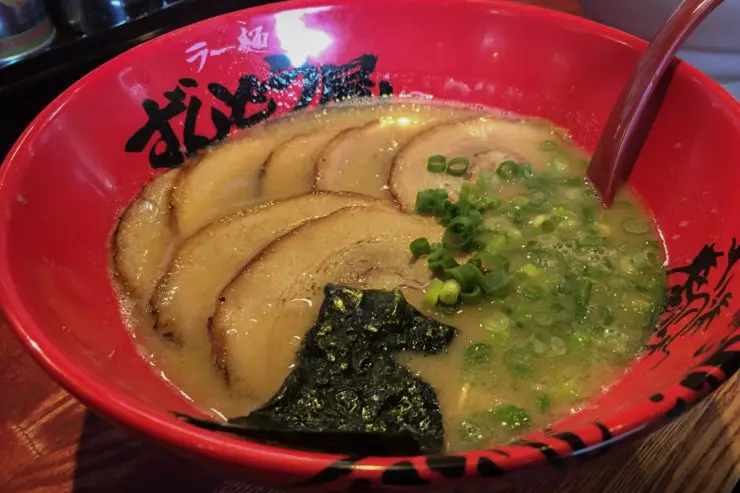
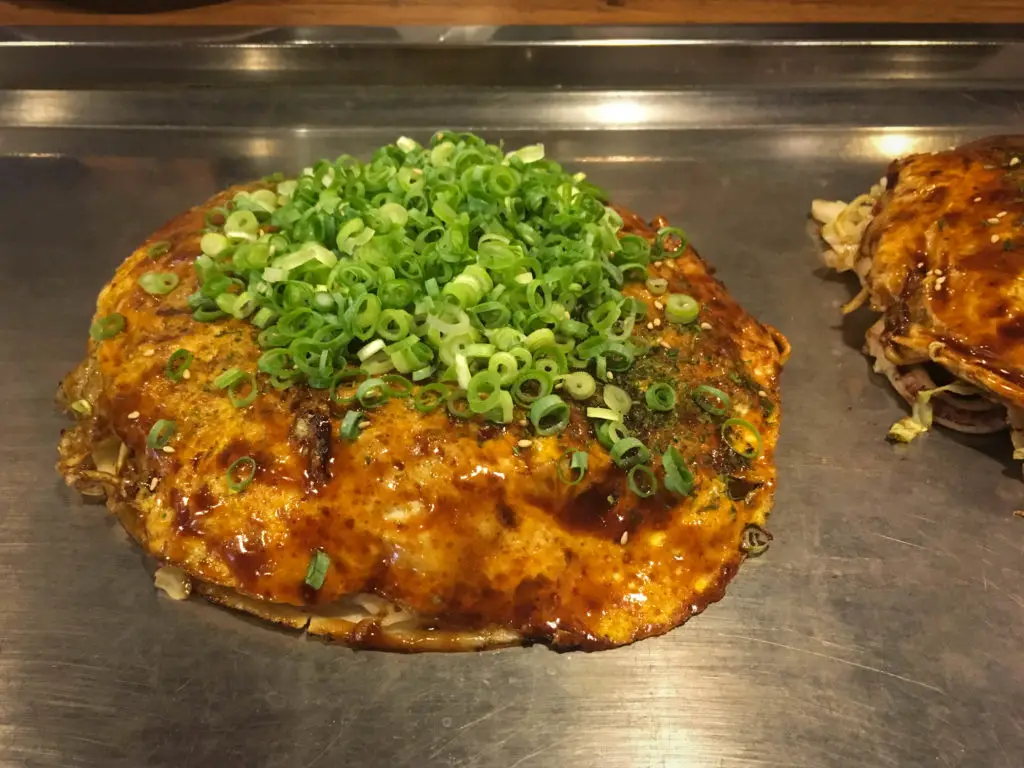
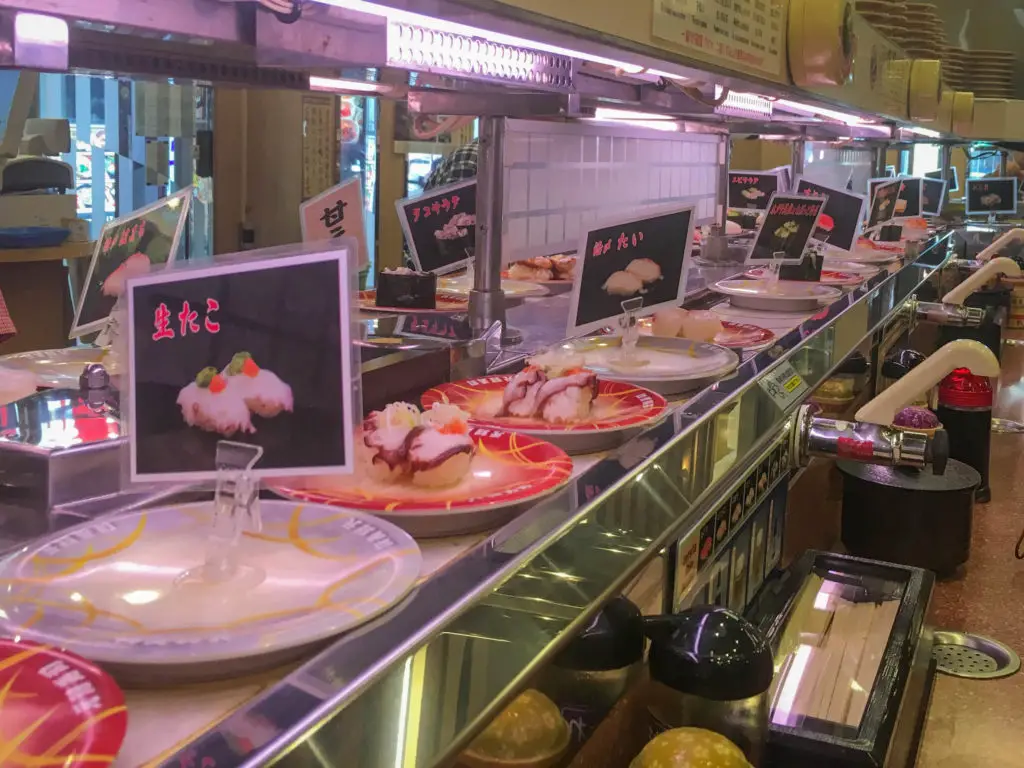
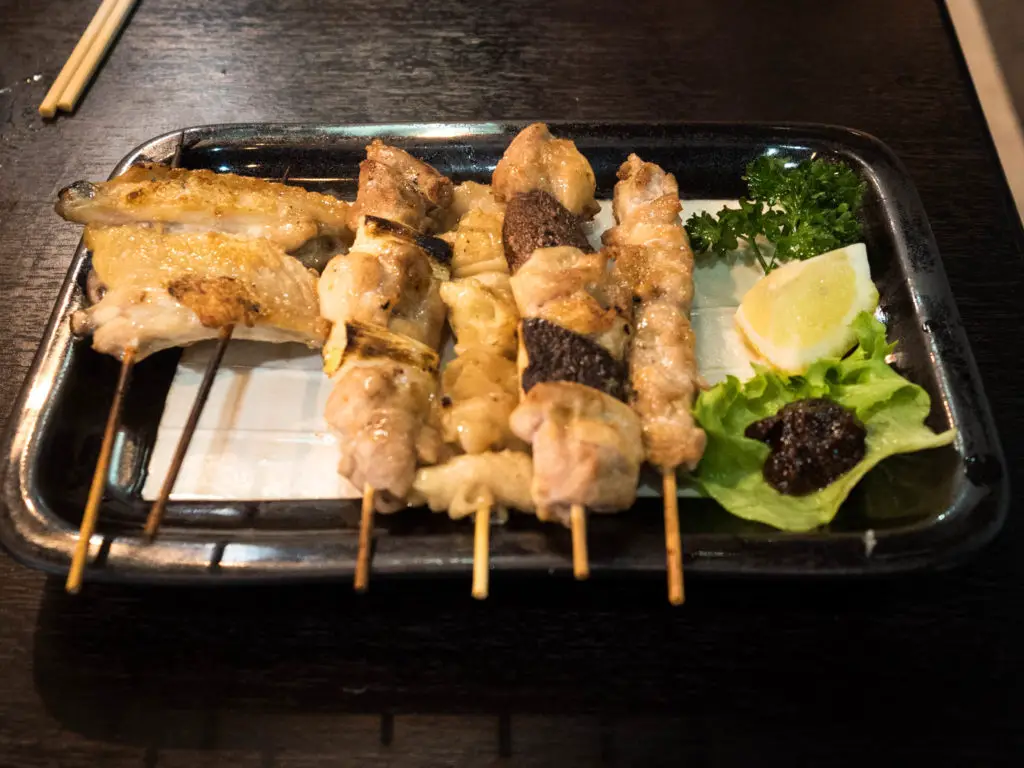
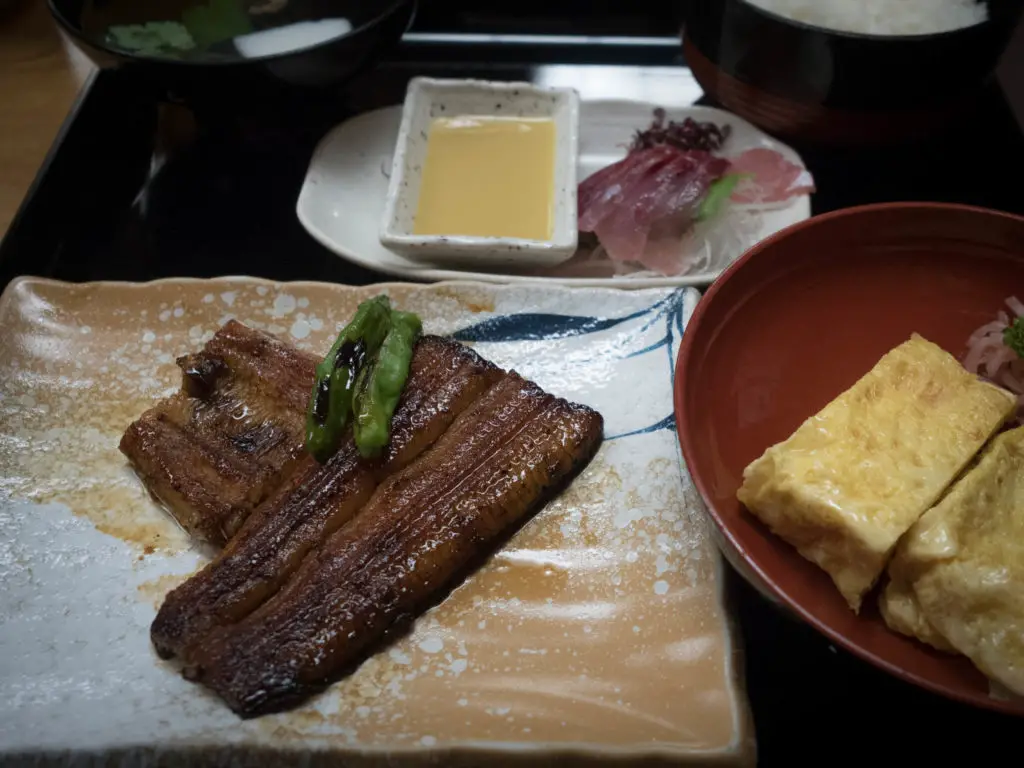
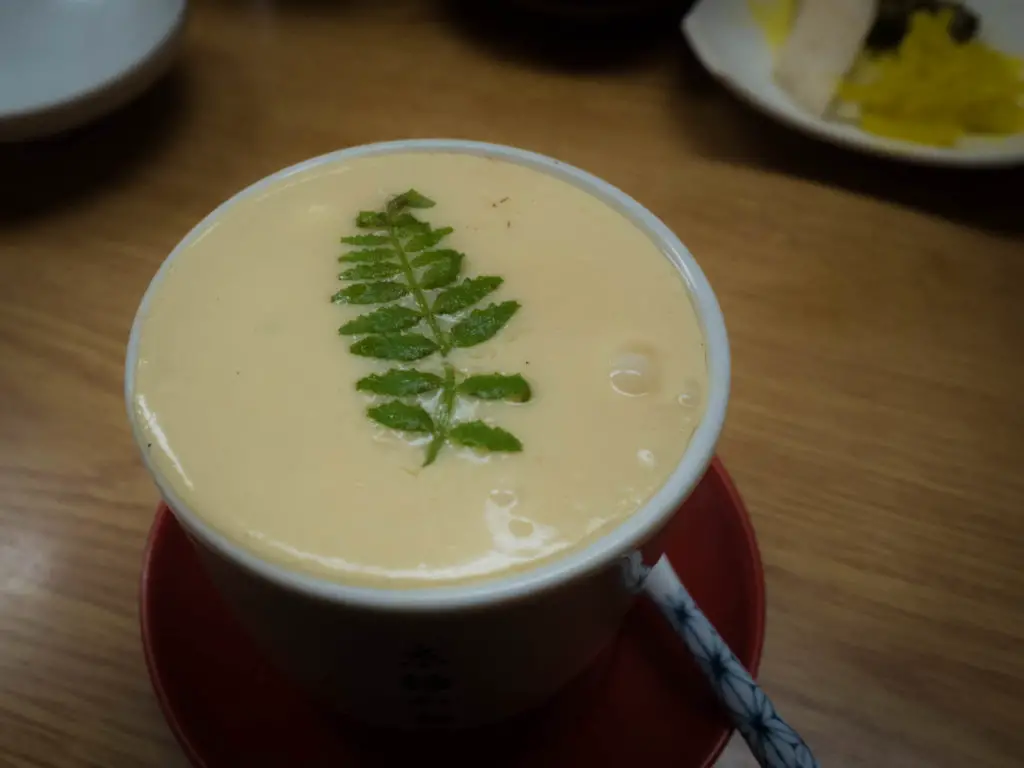
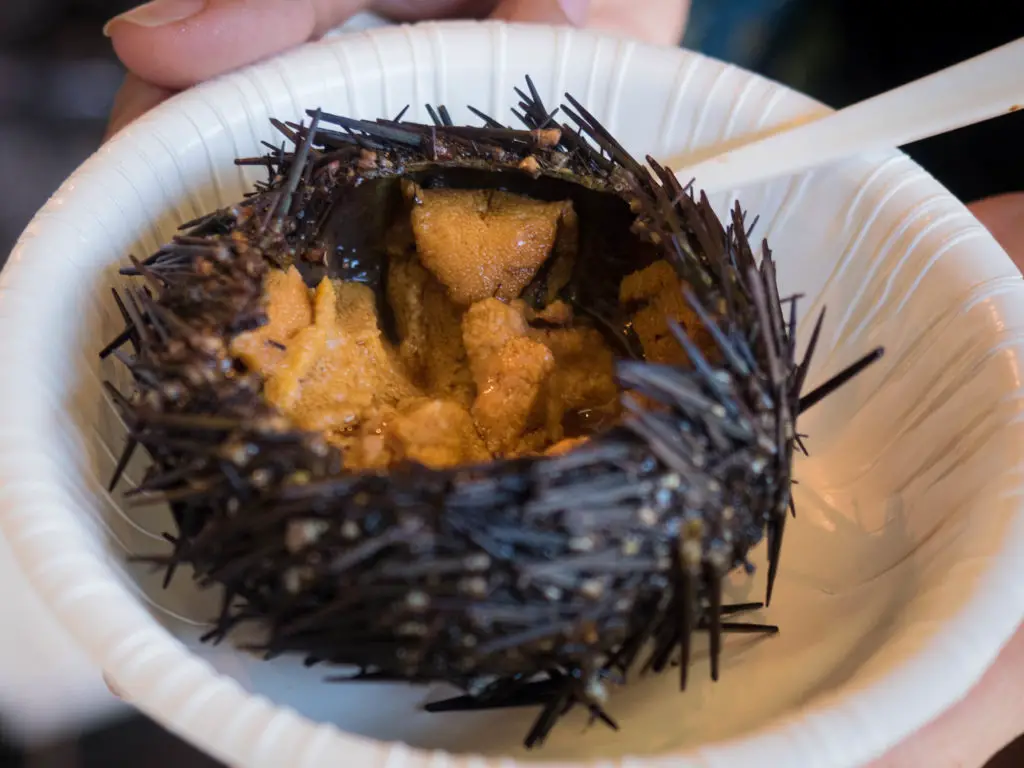
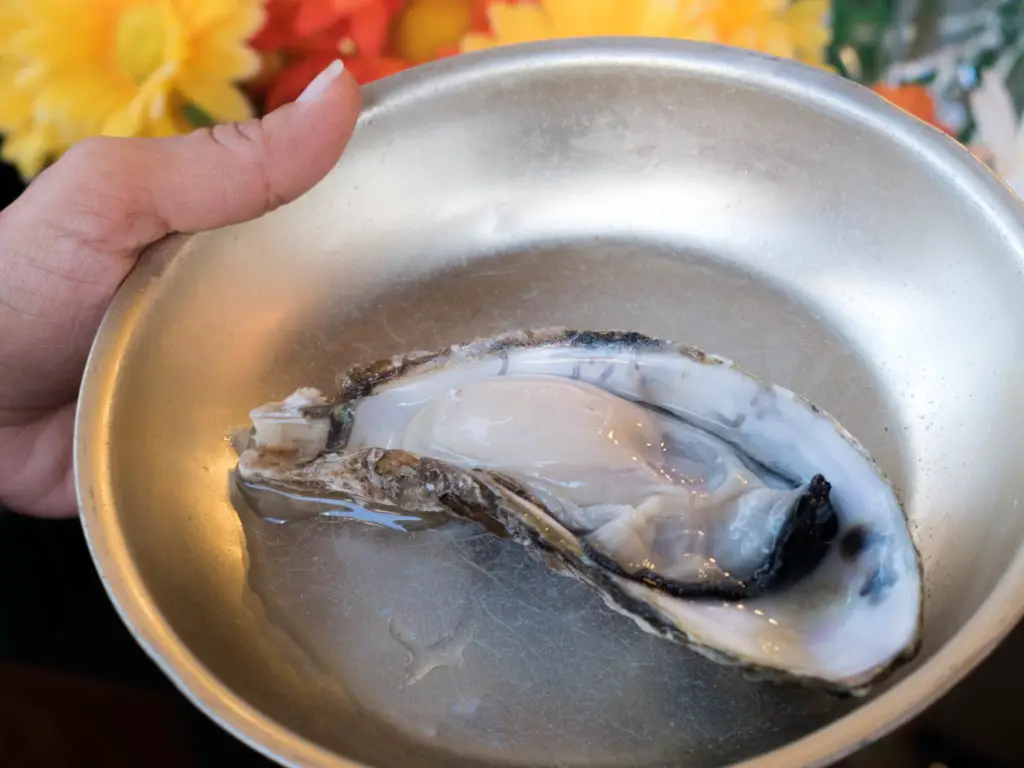
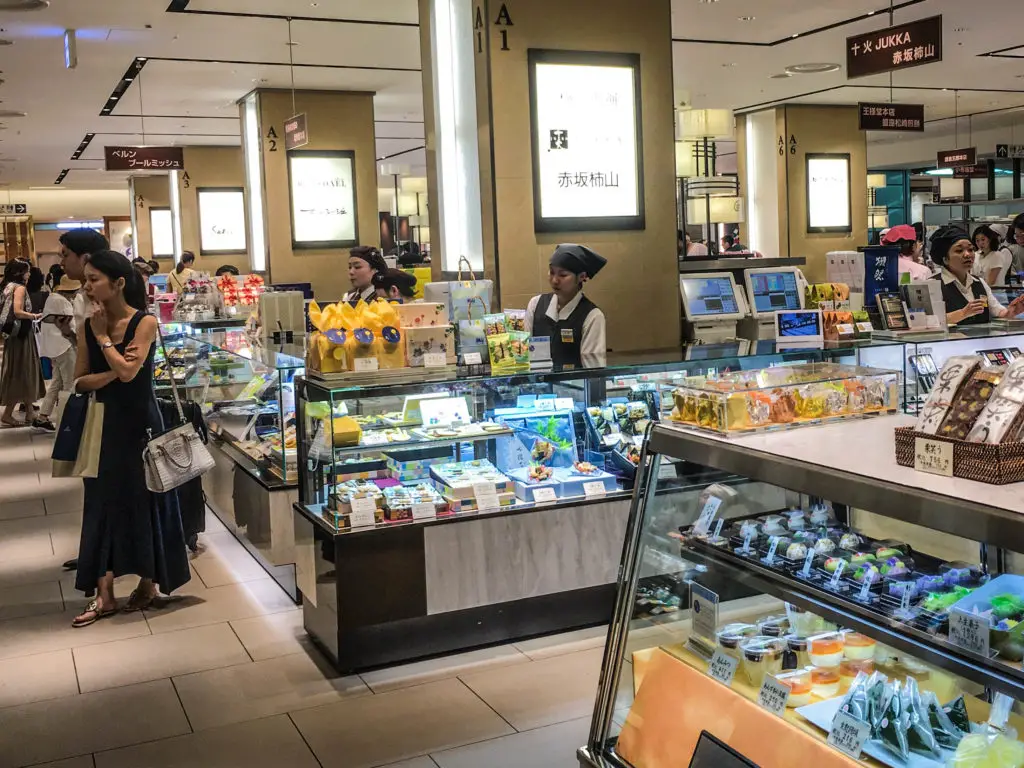
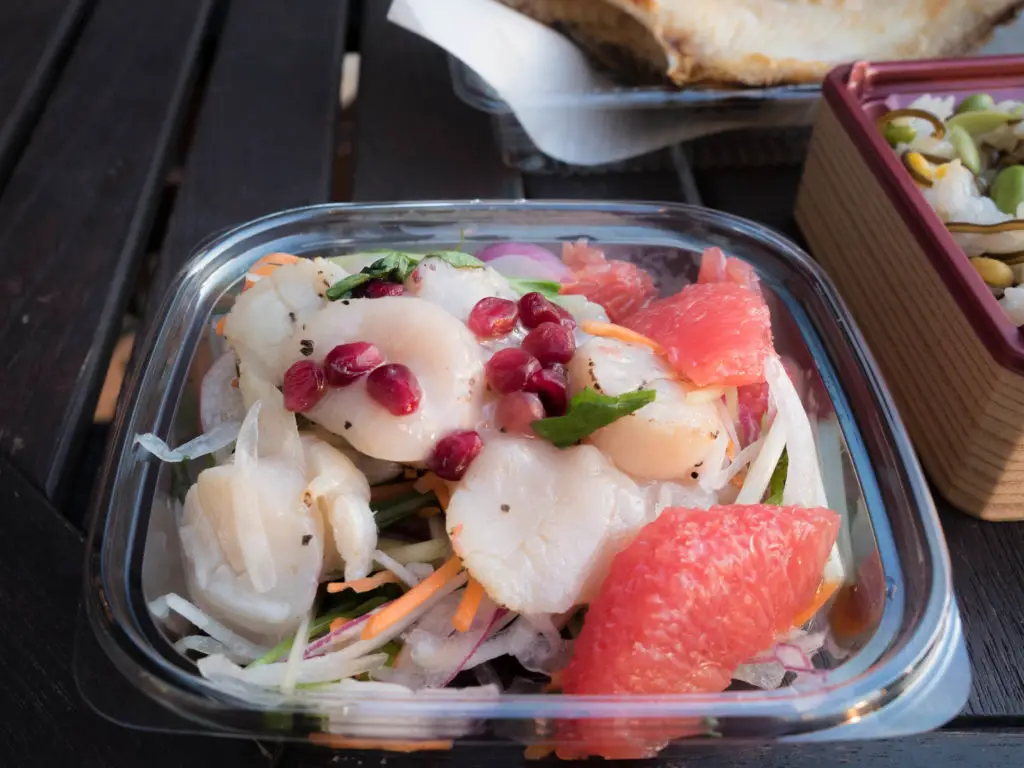
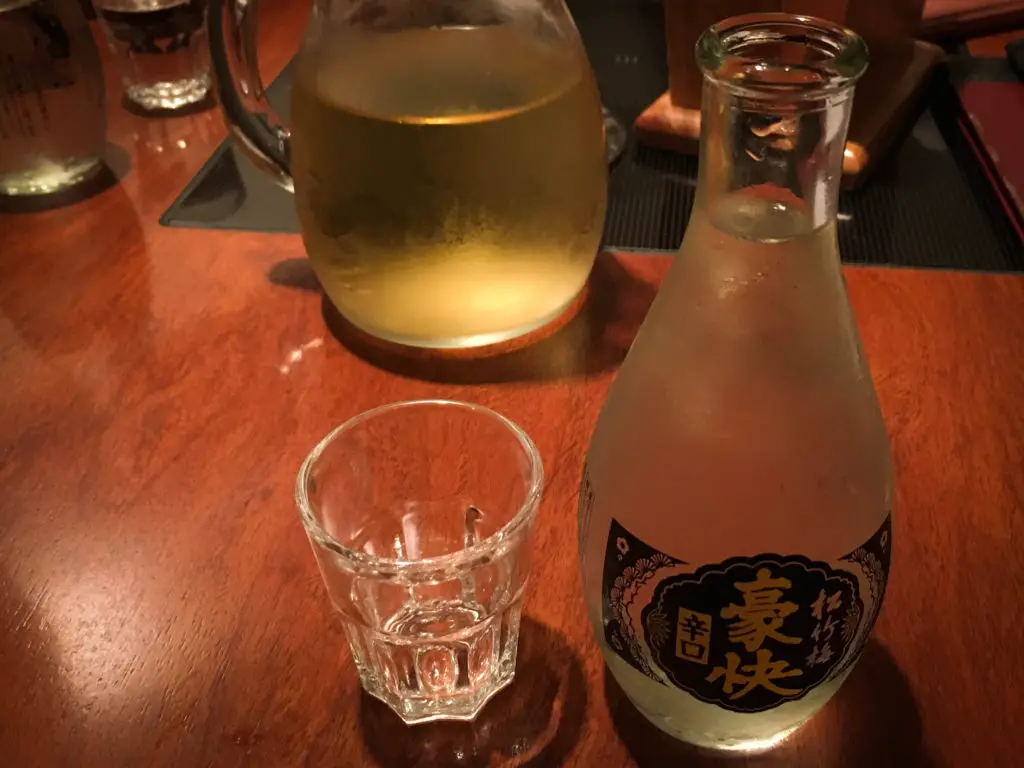
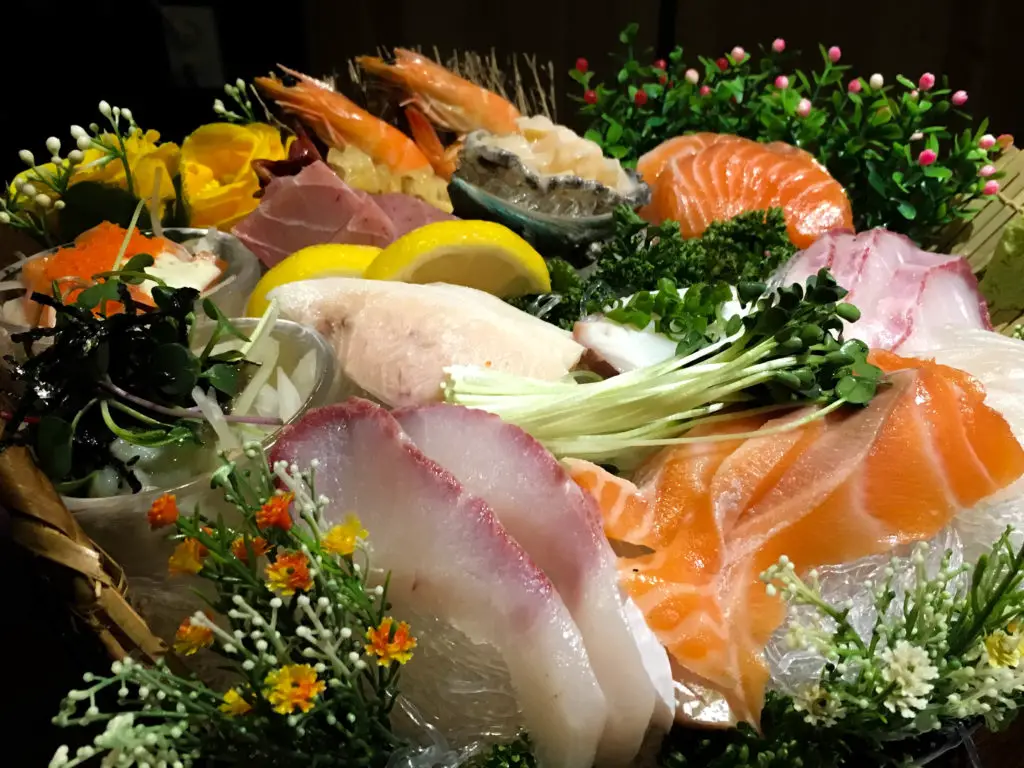
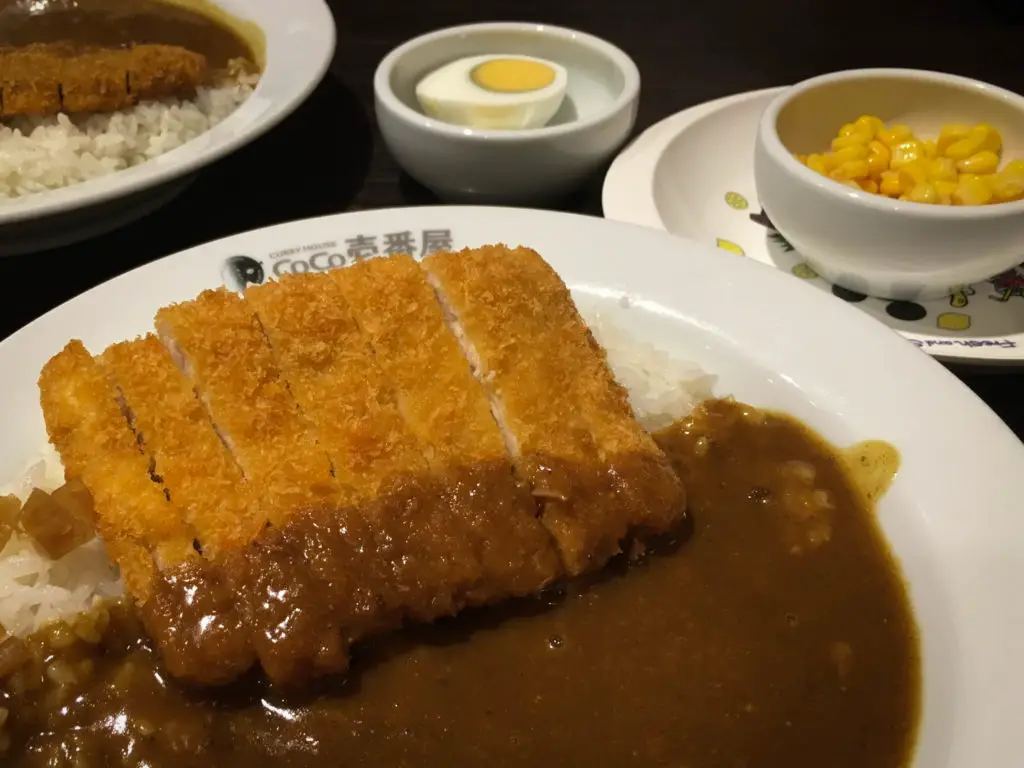
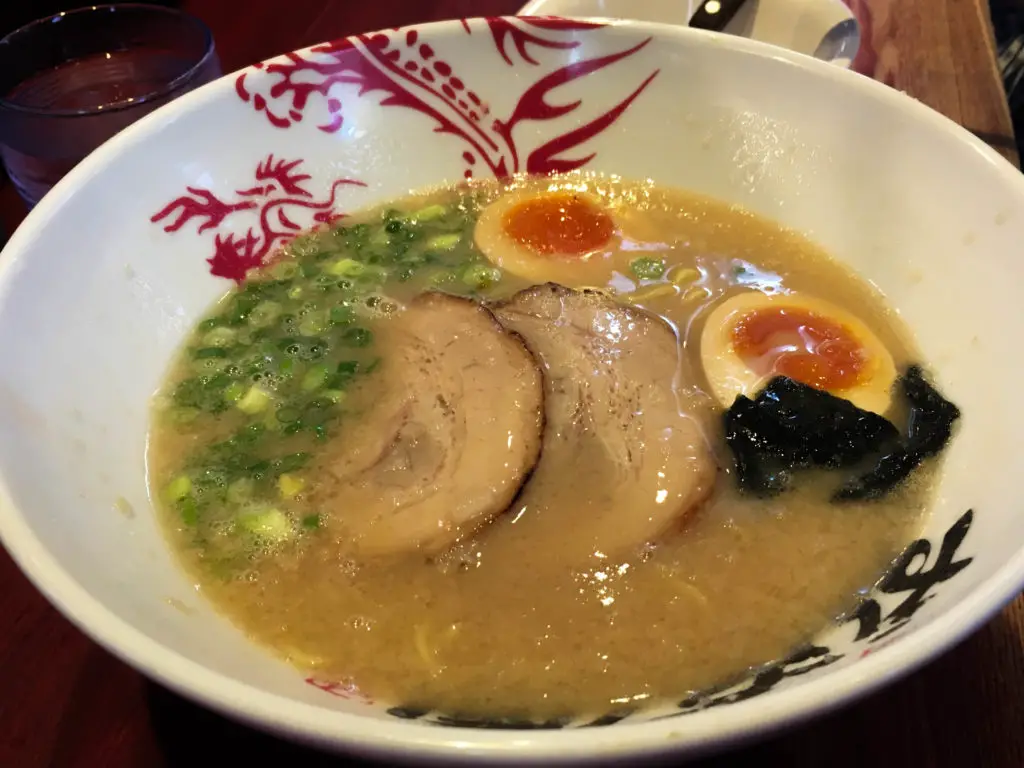
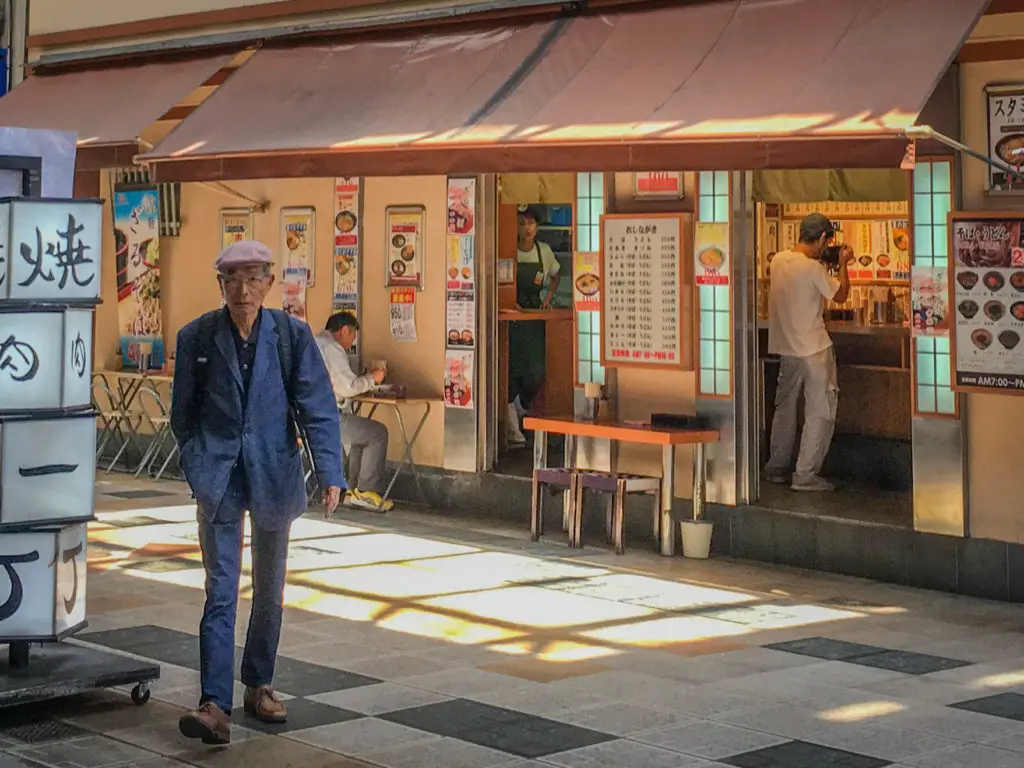
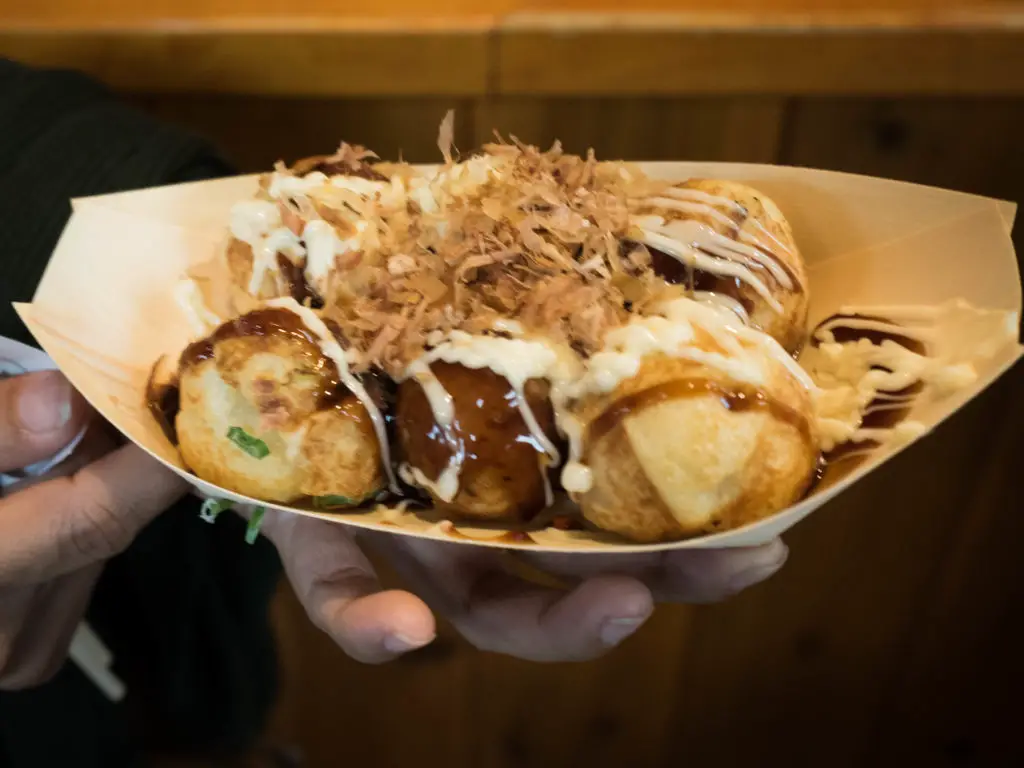
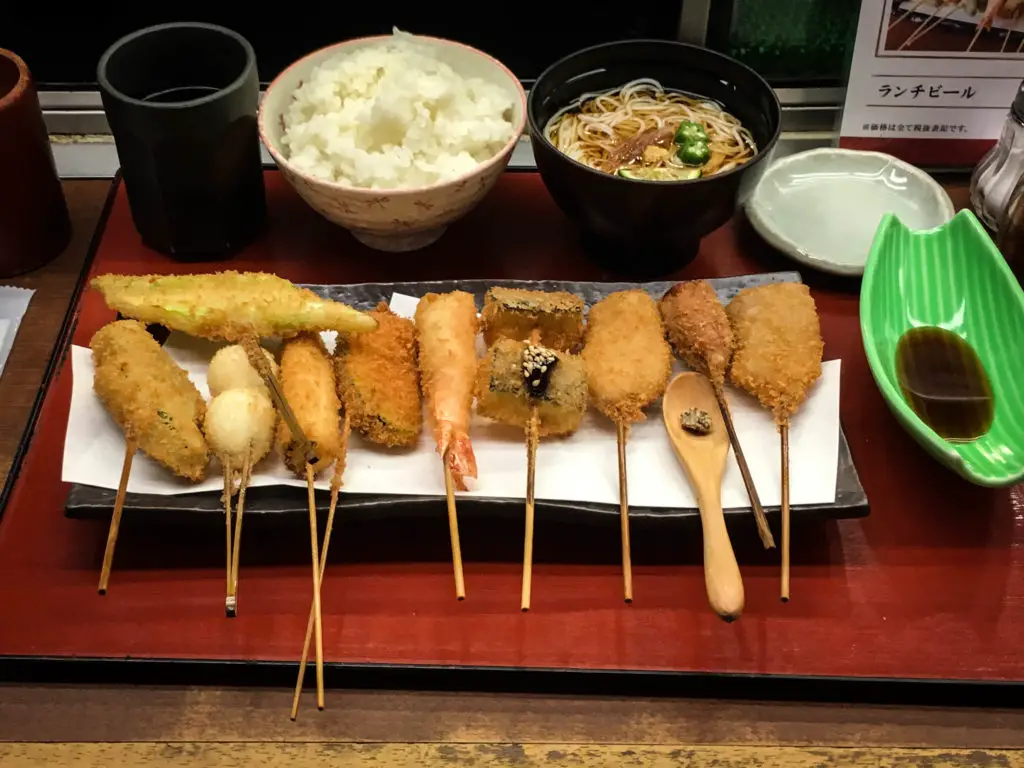
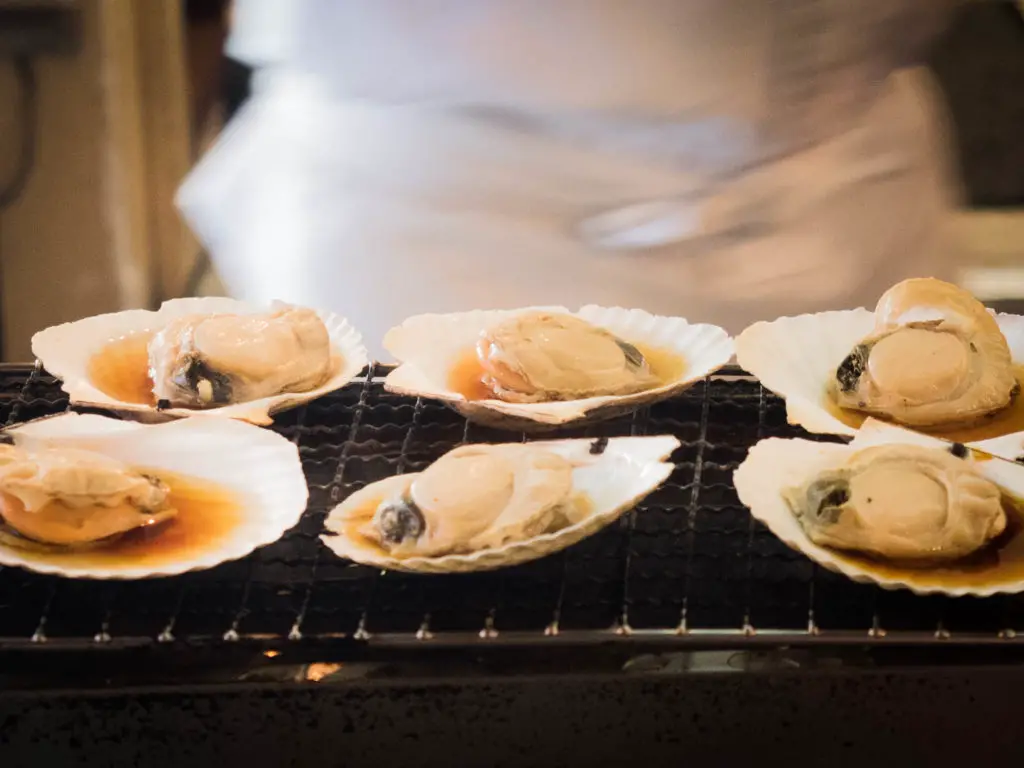
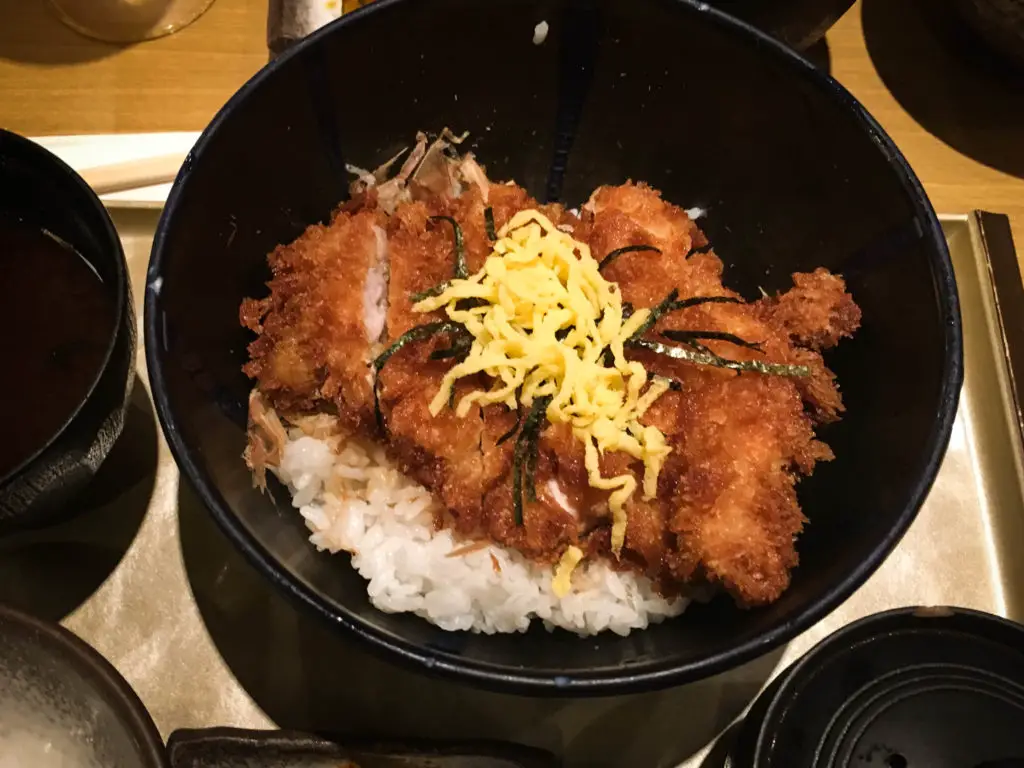
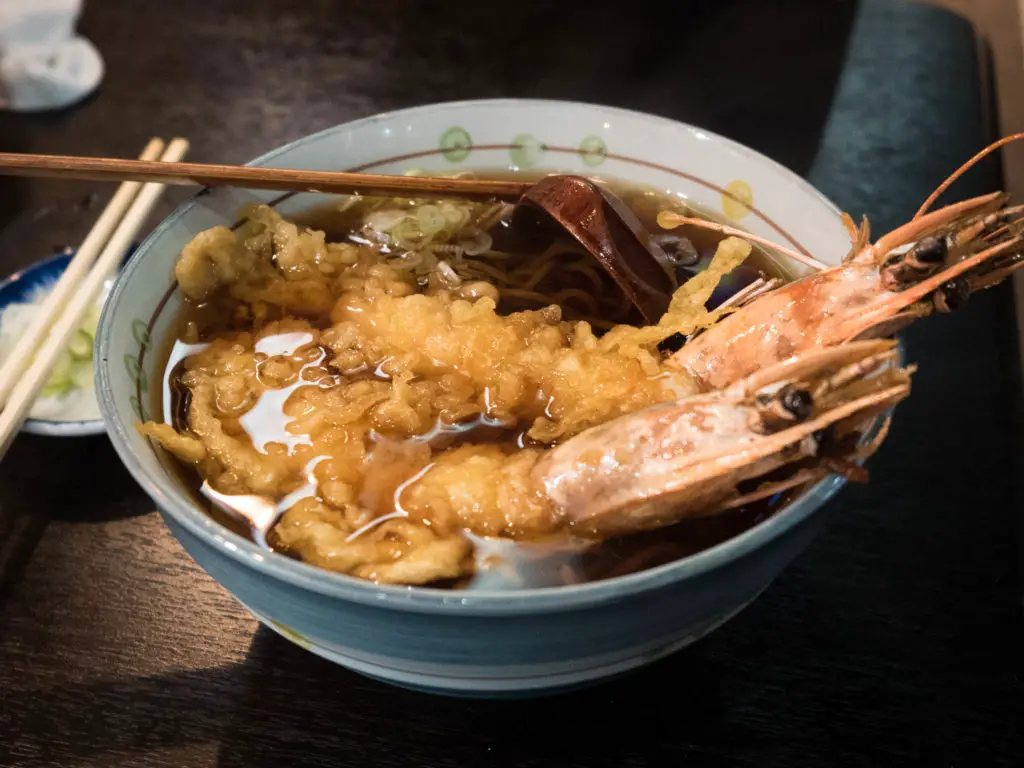
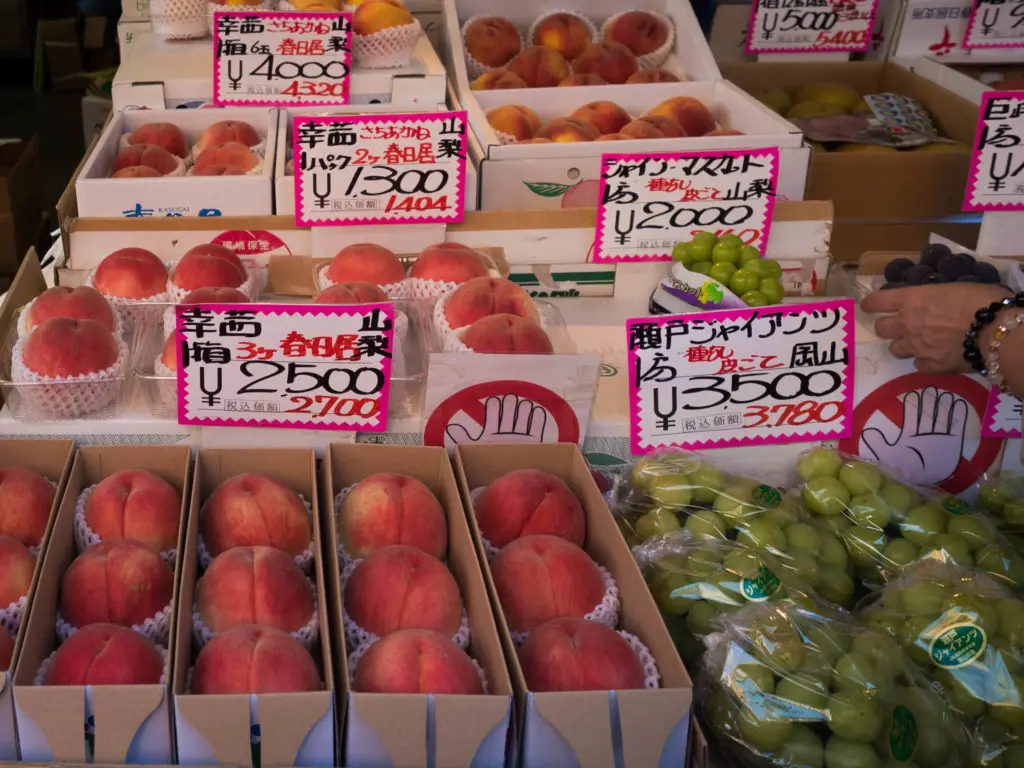
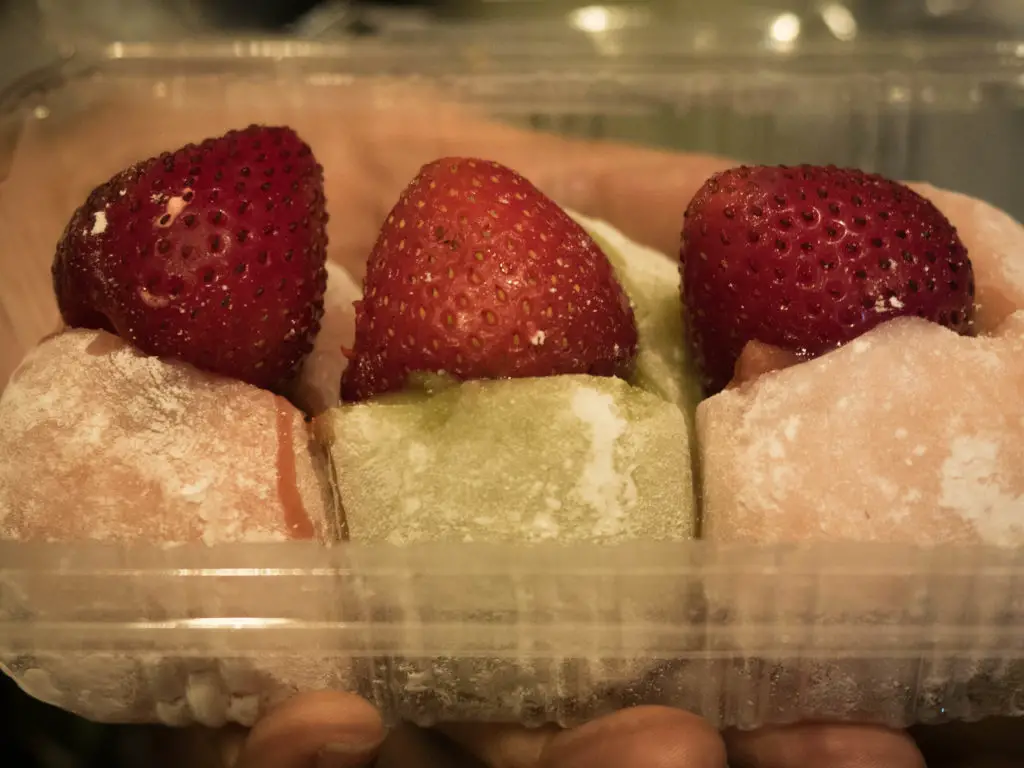
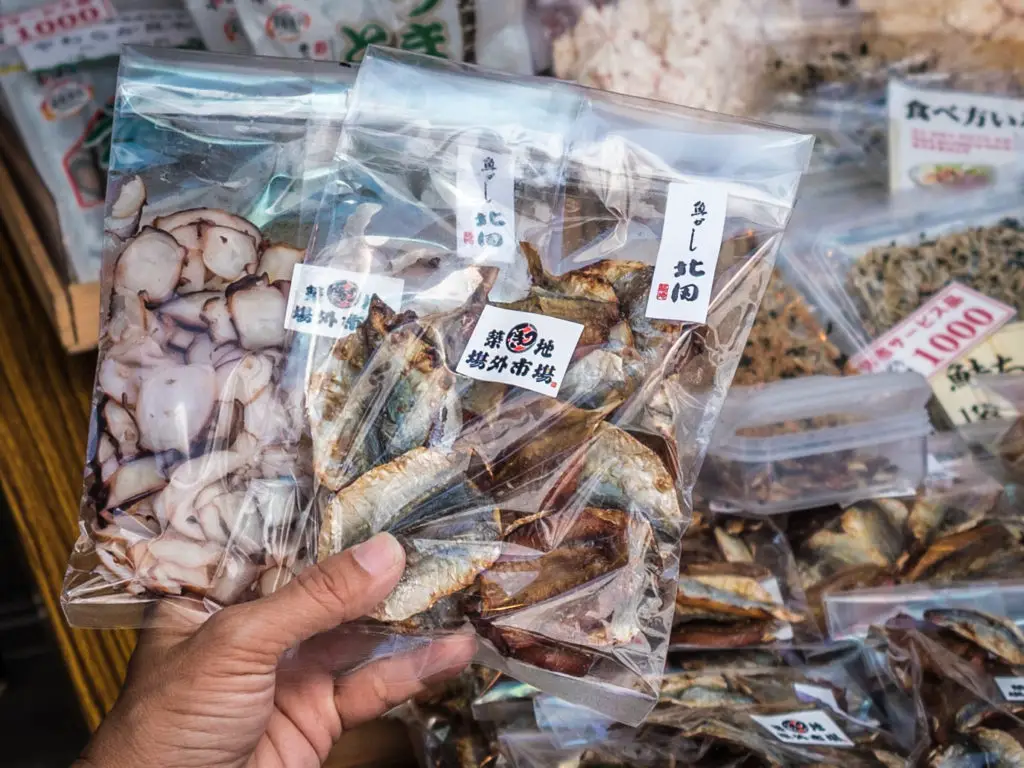
Great food Markus. Salivating while reading
Thanks Cam, it was a joy doing the “research”.
I heard Hiroshima Okonomiyaki is pretty interesting so I would like to try as I’ve only had it in the original origin of Osaka and Tokyo.
CoCo Ichibanya is god-like, say no more. I even had to write a post about how much I loved it: http://nyamwithny.com/coco-ichibanya-japan/
Some of these are my favourites especially donburi and takoyaki! Great post, you have me drooling!
Hi Nyasha, yes, if you have the chance it is worth trying okonomiyaki in Hiroshima. I had a look at your post on CoCo Ichibana and I like the way curries are served in Japan with the ability to custom to your exact tastes.
Thanks for reading.